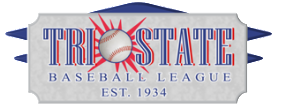We are honored to welcome ‘Gilbert Black’ (bio is below) who will be attending our Tri-State Hall-Of-Fame ceremony and Old Timers Day game on Sunday June 3rd at Community Field in Litchfield.
Schedule:
11:00am – Batting Practice Old-Timers
12:00 (noon) – Introductions
12:05pm: Hall-Of-Fame Ceremony
12:45pm: Old Timers Game
3:00pm: Amenia Monarchs vs Litchfield Cowboys (Tri-State League)
Gilbert Black Bio
Gil grew up in New York City until the age of sixteen. He lived two and one half blocks from the polo grounds and in sight of Yankee Stadium. The first baseball game he ever saw was the Boston Red Sox and the New York Yankees where he saw Ted Williams and Joe DiMaggio play. In 1950 and 1951 he got to see every game for the New York Giants and was there in 1951, when the Giants’ Bobby Thompson hit the “shot heard ‘round the world,” clinching his team’s National League title over the rival Brooklyn Dodgers.
At sixteen he moved to Stamford, Connecticut. From 1952 to 1954 he played at Stamford High School where he ended up with a 15-1 record as a pitcher. Stamford was a baseball town; they had a couple black baseball teams called the Eagles and the Stamford Black Yankees. The Eagles were all men and good ball players. Gil decided to play with them and in the fall of 1953, he started to play in some big money games. He played under the name Kenny Hart. He did not want to use his real name because he was still in high school. No one ever found out. In the fall of 1954 he attended a professional baseball tryout camp with the Milwaukee Braves and the very next day was contacted and offered a major league contract. After attending spring training the following year, he was shipped to a minor league team in West Palm Beach, Florida and later released.
Unfortunately, a sign of the times hit Gil’s career hard. Being an African-American in a predominantly white game, Gil said it was hard for teams to spend time, money and efforts on accommodating the outcast players. There were certain towns and states you couldn’t play in. Gil told stories of being assigned to a bed on a porch while white players on his team were allowed beds inside housing arrangements. During games in West Palm Beach, black fans weren’t allowed to sit in the grandstand. They were relegated to the right-field bleachers in the back of the stadium, a thinly veiled metaphor for the back of a bus.
Gil played his 1956 season with Ed Hamman’s Indianapolis Clowns in the Negro Leagues, who, four years before his arrival, saw a player by the name of Henry Louis Aaron don the Clowns’ uniform. During his Clowns’ tenure, Gil threw to Clarence “Choo Choo” Coleman, later picked up by the Philadelphia Phillies and expansion New York Mets in 1962. While playing in Mississippi in 1956, a time when black ballplayers still ate at segregated tables in Mississippi and the rest of the deep South, Gil was positioned in centerfield for his Negro League team. All of a sudden, a sheriff, who was driving by parked his car near home plate and stopped the game. Apparently someone had called the police. Gil was a man of lighter skin and even though Jackie Robinson had integrated Major League Baseball a decade earlier, it was illegal for a white man to play on a Negro league team in Mississippi. The Sheriff walked past the pitcher’s mound and started toward Gil in the outfield. So Gil, a 20-year-old kid with long arms and longer odds of making it big, took a deep breath and pulled down the brim of his cap. The sheriff walked right up to him, looked at his face and his arms, and then he did it again. Finally, the sheriff muttered the only word Gil wanted to hear: “OK.”
With a broken wrist following the 1956 season, Gil went home to Connecticut for two months and got married, landing a job with Armstrong Rubber, which provided a much more reasonable paycheck than he was getting from the Clowns. That’s where he found his connection with the Northwest Corner. Playing in the Twilight Leagues, including the Inter-state League before it disbanded in 1968 and new management started the Tri-State League, Gil threw off bumps such as the one in at Fuessenich Park in Torrington for around a decade where he also spent a couple of years living as a Litchfield resident. Gil was able to find a great baseball home during his spare time. These days, Gil still travels to annual Negro League Baseball Conferences across the country, and spends his time with family. The kid who witnessed the game’s heyday, pitched in numerous battles and fell in love with the game from his days in the Polo Grounds parking lots, still, to this day, enjoys every minute of America’s favorite game.
